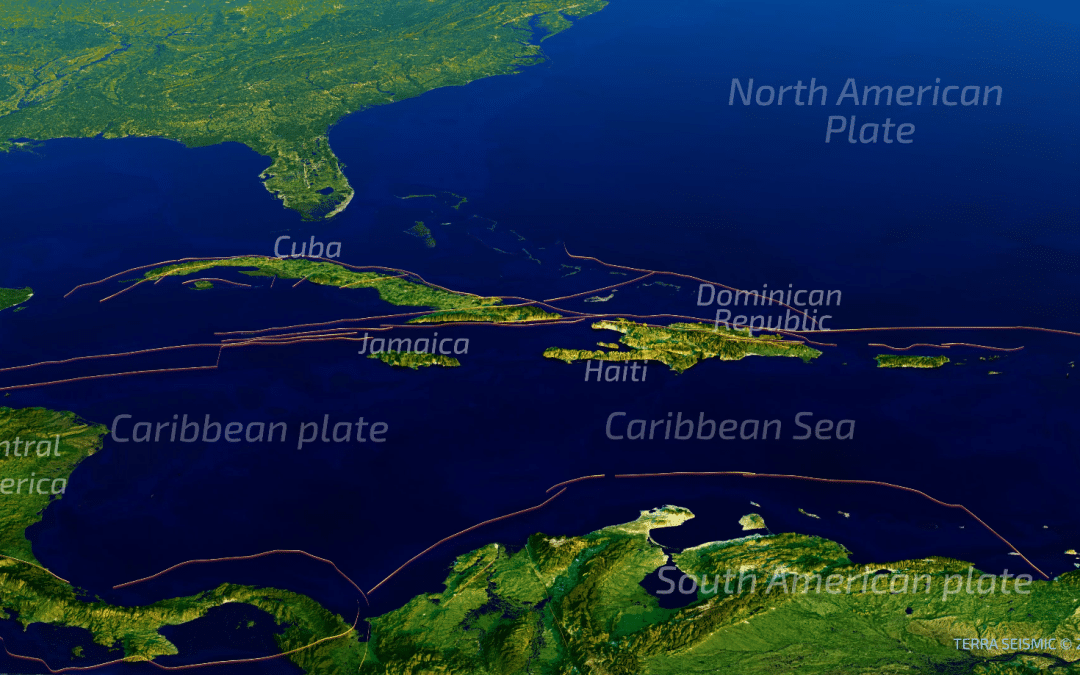Seismicity in the Caribbean is largely influenced by the complex interactions between the Caribbean Plate and several surrounding plates, including the North American Plate, the South American Plate, and the smaller Cocos and Nazca Plates. This dynamic tectonic environment creates a region with significant and diverse seismic activity. Key factors defining seismicity in the Caribbean include:
Plate Boundaries and Movements: The Caribbean Plate is surrounded by a series of complex plate boundaries:
- To the north, the plate interacts with the North American Plate along a transform boundary, notably along the Septentrional and the Enriquillo-Plantain Garden fault systems, which can generate significant earthquakes.
- To the south, the Caribbean Plate interacts with the South American Plate. This interaction is characterized by both subduction and strike-slip motions, contributing to seismic activity in countries like Venezuela and Trinidad and Tobago.
- In the eastern Caribbean, the Atlantic Oceanic crust of the North American Plate is subducting beneath the Caribbean Plate, leading to volcanic and seismic activity in the Lesser Antilles.
Subduction Zones: The subduction of the Atlantic crust beneath the Caribbean Plate along the Lesser Antilles Arc is responsible for the creation of a volcanic arc and associated seismic activity, including powerful earthquakes and tsunamis.
Transform Faults: The movement along transform faults like those in Haiti and the Dominican Republic can cause devastating earthquakes, as evidenced by the 2010 Haiti earthquake.
Volcanic Activity: The subduction processes in the eastern Caribbean give rise to not only earthquakes but also significant volcanic activity, which itself can induce seismic events.
Intraplate Earthquakes: Although less common, intraplate earthquakes occur within the Caribbean Plate due to internal stresses and localized fault movements.
Tsunami Risk: Given the region’s history of large subduction zone earthquakes and its extensive coastline, the Caribbean has a significant risk of tsunamis, particularly along the eastern and northern coasts.
Historical Seismicity: The region has a long history of destructive earthquakes which have shaped its geological understanding and preparedness strategies. Events like the 1692 destruction of Port Royal, Jamaica, and the aforementioned 2010 Haiti earthquake underscore the seismic risks.
The convergence of these geological features and tectonic processes makes the Caribbean a seismically active region with diverse mechanisms for earthquake generation, requiring comprehensive disaster preparedness and mitigation strategies to handle potential earthquakes and associated tsunamis.

